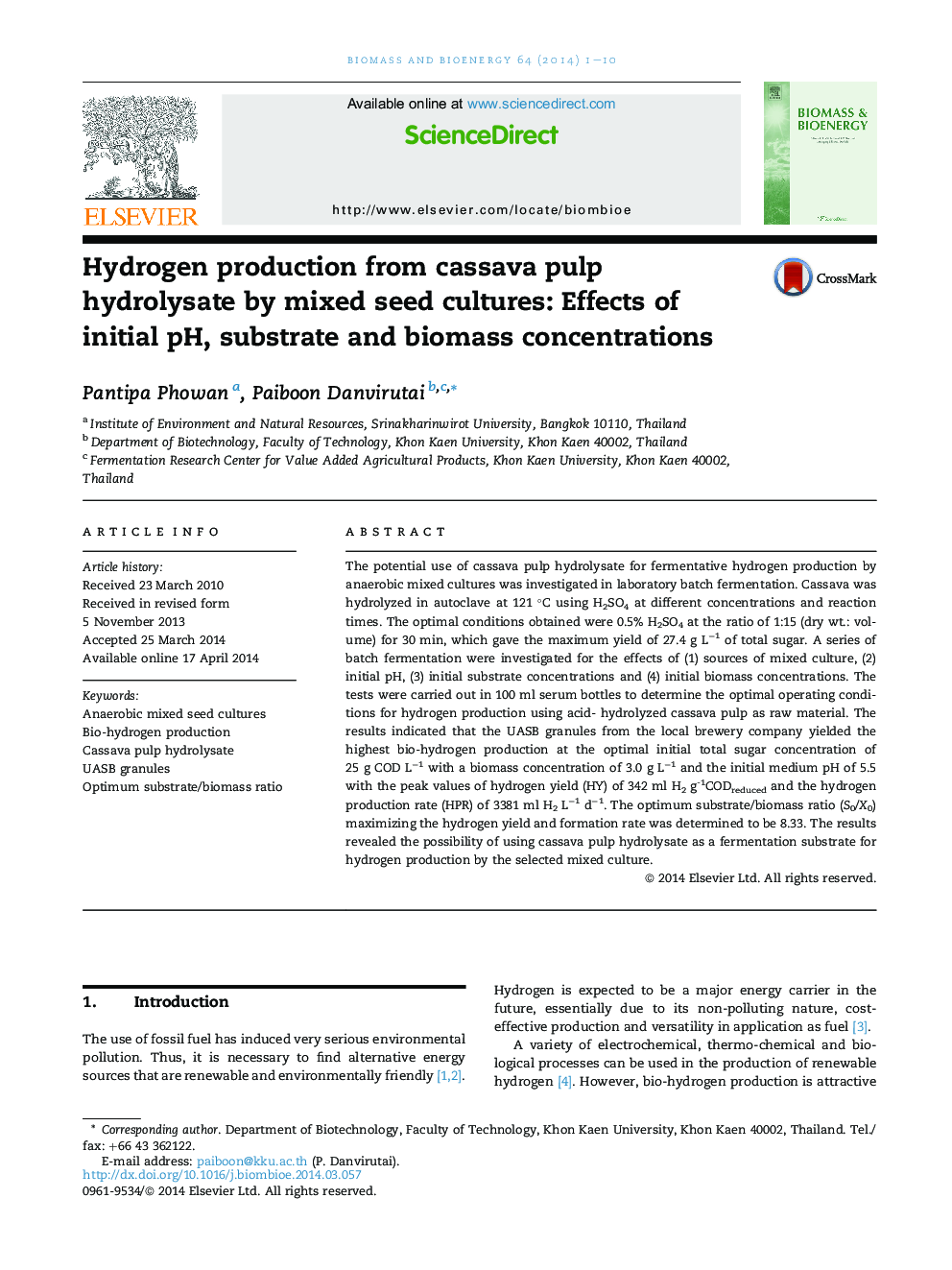| کد مقاله | کد نشریه | سال انتشار | مقاله انگلیسی | نسخه تمام متن |
|---|---|---|---|---|
| 676869 | 1459829 | 2014 | 10 صفحه PDF | دانلود رایگان |

• H2 production from cassava pulp hydrolysate by 3 mixed culture sources was studied.
• The UASB granules from brewery show the potential for fermentative H2 production.
• Optimal conditions were S0 25 g COD L−1, X0 3.0 g L−1 and initial pH 5.5.
• The highest HY of 342 ml H2 g-1CODreduced and HPR of 3381 ml H2 L−1 d−1 were obtained.
• The optimum S0/X0 maximizing the HY and HPR was 8.33.
The potential use of cassava pulp hydrolysate for fermentative hydrogen production by anaerobic mixed cultures was investigated in laboratory batch fermentation. Cassava was hydrolyzed in autoclave at 121 °C using H2SO4 at different concentrations and reaction times. The optimal conditions obtained were 0.5% H2SO4 at the ratio of 1:15 (dry wt.: volume) for 30 min, which gave the maximum yield of 27.4 g L−1 of total sugar. A series of batch fermentation were investigated for the effects of (1) sources of mixed culture, (2) initial pH, (3) initial substrate concentrations and (4) initial biomass concentrations. The tests were carried out in 100 ml serum bottles to determine the optimal operating conditions for hydrogen production using acid- hydrolyzed cassava pulp as raw material. The results indicated that the UASB granules from the local brewery company yielded the highest bio-hydrogen production at the optimal initial total sugar concentration of 25 g COD L−1 with a biomass concentration of 3.0 g L−1 and the initial medium pH of 5.5 with the peak values of hydrogen yield (HY) of 342 ml H2 g-1CODreduced and the hydrogen production rate (HPR) of 3381 ml H2 L−1 d−1. The optimum substrate/biomass ratio (S0/X0) maximizing the hydrogen yield and formation rate was determined to be 8.33. The results revealed the possibility of using cassava pulp hydrolysate as a fermentation substrate for hydrogen production by the selected mixed culture.
Journal: Biomass and Bioenergy - Volume 64, May 2014, Pages 1–10